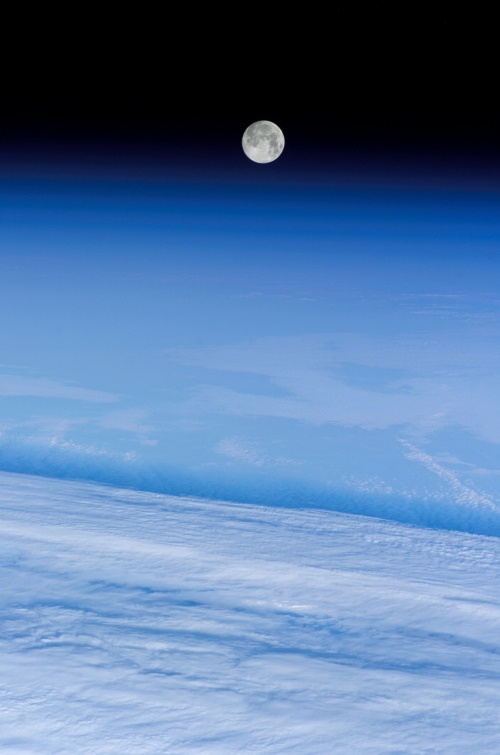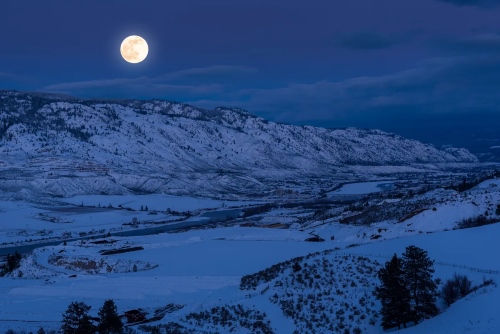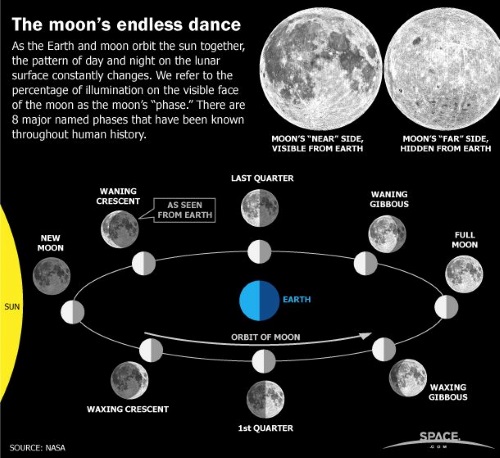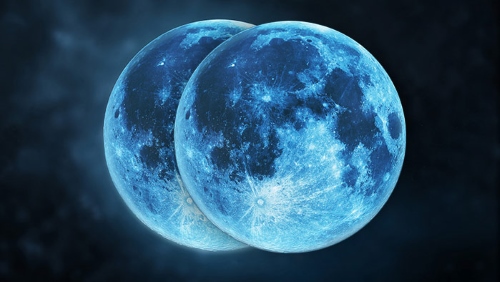The full moon also known as, Snow Moon, occurring on February 12, 2025, will offer a breathtaking celestial display. As it emerges above the eastern horizon at dusk, it will display striking shades of orange and red, creating a captivating view for skywatchers. However, this event will occur without a lunar eclipse. Known for its association with winter, this full moon promises vibrant hues and a stunning spectacle. Here’s everything you need to know about this beautiful moon event, including its peak time, viewing tips, and significance.
What Is the Snow Moon?
The Snow Moon is the full moon that occurs in February, named for the heavy snowfall typical of this month in the Northern Hemisphere. Various cultures have their names for this moon, influenced by local customs and weather conditions.

Source: NASA
Why is it Called the Snow Moon?
Each full Moon has a traditional name that dates back centuries, serving as a way to track the changing seasons. February's full Moon is called the Snow Moon because of the heavy snowfall commonly experienced during this time in the Northern Hemisphere. Other names include:
- Native American Tribes: Known as the Snow Moon, Storm Moon, or Hunger Moon due to food scarcity during the harsh winter months. The Bear Moon is also common, marking the season when bears give birth to cubs.
- Celtic and Old English Traditions: Called Ice Moon or Storm Moon, referencing icy storms and the cold temperatures that prevail in February.
When to See the Snow Moon in 2025?
The Snow Moon will reach its peak on February 12, 2025. The exact time of its peak may vary depending on your location:
- New York: 5:41 PM (Moonrise) | 5:26 PM (Sunset)
- Los Angeles: 5:57 PM (Moonrise) | 5:33 PM (Sunset)
- London: 5:09 PM (Moonrise) | 5:04 PM (Sunset)

Source: skyatnightmagazine/gettyimage
The moon will rise in the east shortly after sunset and reach its peak at midnight local time. If you miss the full moon, you can still enjoy the nearly full moon on February 11 and February 13.
How Does a Full Moon Occur?
A full Moon happens when the Sun, Earth, and Moon align in a straight line (a phenomenon called syzygy), making the entire Moon visible from Earth.
Interesting Fact:
The February 2023 Snow Moon was the smallest full Moon of the year, classified as a Micromoon (the opposite of a Supermoon).
Best Viewing Locations and Tips
To witness the full glory of the Snow Moon, consider the following tips for an optimal viewing experience:
| Tip | Details |
| Seek Elevated Spots | Look for hills or tall buildings for an unobstructed view of the eastern horizon. |
| Go to an Open Space | Head to a beach or open fields, away from city lights, for a better view. |
| Use Binoculars | Binoculars can enhance the view, revealing lunar craters and surface details. |
| Check Weather | Ensure clear skies by checking weather forecasts, as cloud cover can obscure the view. |
Significance of the Snow Moon
The Snow Moon is the second full moon of 2025. Its name is derived from the snowy conditions typical of February in many regions. In addition to its winter connotations, the moon also holds cultural significance:
- Regulus in Leo: This year, the Snow Moon will appear in the Leo constellation, with Regulus, the brightest star, visible nearby. Regulus, often considered the "heart of the lion," symbolizes the approach of spring.
- Alternative Names in Different Cultures: Beyond the Snow Moon, it is also called the Bear Moon by the Ojibwe people, or the Hungry Moon, reflecting the scarcity of food during mid-winter.
What Is a Black Moon?
In rare cases, February may experience a "Black Moon," when the month has neither a new moon nor a full moon. This phenomenon occurs because February is the shortest month of the year. While uncommon, it happens about once every 19 years. Black moons can also refer to other lunar events, such as multiple new moons occurring within the same month.

Source: Karl Tate/Space.com
Key Dates for Full Moons in 2025
Here’s a full schedule of the remaining full moons for 2025:
| Month | Full Moon Name | Date & Time (UTC) |
| March | Worm Moon | March 14, 2:55 AM |
| April | Pink Moon | April 12, 8:22 PM |
| May | Flower Moon | May 12, 12:56 PM |
| June | Strawberry Moon | June 11, 3:44 AM |
| July | Buck Moon | July 10, 4:37 PM |
| August | Sturgeon Moon | August 9, 3:55 AM |
| September | Corn Moon | September 7, 2:09 PM |
| October | Hunter’s Moon | October 6, 11:48 PM |
| November | Beaver Moon | November 5, 8:19 AM |
| December | Cold Moon | December 4, 6:14 PM |
How to Maximize Your Viewing Experience
To ensure a spectacular view of the Snow Moon, keep these final tips in mind:
- Get Away from Light Pollution: Urban areas can obscure the clarity of the moon and stars. Find a dark, open space to enjoy the event.
- Dress Warmly: February temperatures can be cold, especially during nighttime stargazing. Bring layers to stay comfortable.
The Lunar Month & Blue Moon Phenomenon
The Moon takes 29.5 days to orbit Earth, completing a lunar month. This generally results in 12 full Moons per year, but occasionally 13 full Moons occur due to calendar misalignment. When two full Moons appear in one month, the second is called a Blue Moon. The next monthly Blue Moon will occur on May 31, 2026.

Source: moongiant
Conclusion
The Snow Moon on February 12, 2025, promises to be a captivating sight, with its stunning hues and cultural significance. Whether you're an avid stargazer or a casual observer, this full moon offers a perfect opportunity to marvel at the beauty of the night sky. Be sure to check your local times, find a good viewing spot, and prepare for an unforgettable lunar experience!
Comments
All Comments (0)
Join the conversation